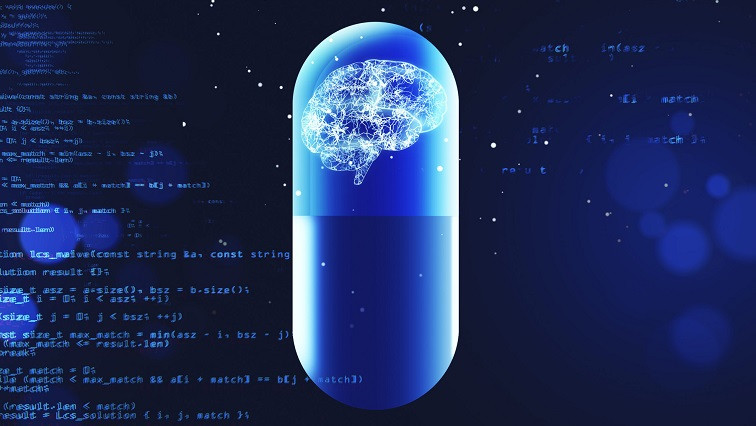A wide range of nanomedicines exist, many of which revolve around being the ‘carrier’. This means that they act as a vessel that can carry therapeutic payloads (a drug of interest) and deliver them to a specific location. This has become particularly useful for delivering drugs that would otherwise be too toxic to administer on their own. There are other nanomedicines as well, such as nanoparticles that can kill cancer cells and nanoforms of drugs that are in solid nanoparticle suspensions.
These are but a few examples, and because nanomedicines span many areas from the ‘drug’ itself to being a carrier, to being either inorganic or organic in nature, there are many things to think about when it comes to designing new nanomedicines. Moreover, once you start getting to the nanomaterial size range, you start to see interesting molecular effects that are based on quantum confinement and quantum movement of electrons compared to bulk (and classical) electron movement. So, this adds another dimension when dealing with nanomaterials compared to other drugs and/or materials.
Pharmaceutical researchers can employ artificial intelligence (AI) algorithms to develop new medicines and see how they behave. Given the interest in nanomedicine by pharmaceutical companies, the interest in using AI to design new molecules also extends to nanomedicine therapies.
Designing New Nanomedicines
Like many active pharmaceutical ingredients (APIs) and complete drug systems, pharmaceutical researchers can use AI to not only predict which are the best potential nanomedicines for a particular scenario, but AI can also be used to understand how the nanomedicines might behave in certain scenarios, the best synthetic pathways for creating the nanomedicine, and how to scale up production.
Pharmaceutical researchers rely heavily on computational chemistry and biology to predict how molecules will behave in certain scenarios. AI can take these prediction mechanisms and use them to design nanomedicines. Rather than looking only at how a drug may behave, the next phase of computer involvement (using AI) aims to take nanomedicine design from concept to large-scale production.
Many factors come into play when designing nanomedicine for a specific clinical purpose due to the scope of nanomedicines available and the ability to combine nanomedicines with other therapies. Inputting data from previous nanomedicine trials and scientific literature regarding how certain nanomedicines behave, how individual nanomaterials and their properties behave, what different chemical functional groups contribute, and how these nanomaterials and/or nanomedicine systems perform in different biological settings, requires the AI to access the historical data needed to cover the many variables.
Once the AI has enough data about different nanomedicines and chemical therapies in general, it can extrapolate the data much quicker than a human can—and with a much higher degree of accuracy—to provide some potential options for the clinical challenge in question. This reduces the time and cost of “trial and error” approaches and provides a starting point that researchers can tweak if necessary. In addition to AI identifying trends, properties, and behaviors across large datasets much easier than a human can, AI can also take into account some of the more unique effects that nanomaterials exhibit, such as quantum phenomena. Most importantly, pharmaceutical researchers can use AI to determine the types of nanomedicines that should behave best in biological settings.
Synthesizing Nanomedicines
Once potential candidates have been selected by the AI, the scientists can synthesize them and see how they work in a real-world setting, as well as see if they are feasible from a commercial standpoint (i.e., are they too hard or costly to manufacture?). The potential for AI does not stop at the design phase. AI can be used to predict the best synthetic routes for the nanomedicines as well as the optimal reaction parameters and likely product outcomes. It can be a very useful tool, as the synthesis and integration of nanomaterials can be very different from other pharmaceutical compounds.
The basis for this is performed in a similar way to the design phase. By inputting data from previous reactions in the scientific literature involving the specific nanomedicines and/or the nanomaterials and other components that are to make up the nanomedicine, the most likely reaction pathway can be chosen. These approaches are essentially the same as a number of scientists going through the literature and choosing the most likely ways of synthesizing every step so that the final nanomedicine product can be created. AI just speeds up this time, freeing up manpower and reducing cost. The AI predictions are often more reliable and accurate than when performed by humans because the algorithms have access to all the data simultaneously.
As a final piece of the synthetic puzzle, it’s no use having an effective product if you can’t make it on a large or commercial scale. Upscale-up reactions are often hard to predict, as the change in production size—including the increased volume of reactants, as well as much larger reaction/process vessels—can often mean that the synthesis doesn’t work quite as expected or works with a much lower product yield than at smaller scales. Just like at smaller synthesis volumes, AI can predict the best methods, optimal reactant concentrations/amounts, and the potential process parameters for the reaction to be a success on larger production scales.
So, AI can take nanomedicines from concept to large commercial volumes, as it can with many other pharmaceutical compounds. But AI can also go beyond the design and production process and be used to also look at any potential toxicity effects that the nanomedicine might have on the body (as it’s no good having a commercial product if it is harmful to the user).
Analyzing the Toxicity Profiles of Nanomedicines
The potential toxicity and harmful effects of nanomaterials is something that has been of concern to many people, especially given the small size of nanomaterials and the issues that have come about from other small materials, such as asbestos, over the years. Most nanomaterials have undergone numerous studies around the world. With the exception of a few materials in specific nanomaterials or in extreme concentrations, nanomaterials are typically very safe because they are very stable materials.
Naturally, people have concerns about the toxicity of nanomedicines given that they are intended for use in humans. These concerns arise because not many people know how many nanomedicines are already in use in a clinical setting. All nanomedicines on the market or in clinical trials have gone through extensive studies and been proven to be safe. New and emerging medicines must go through similar studies to ensure that they are also safe for human use.
Many of these studies take years to complete, Now, AI can offer a helping hand in analyzing the potential toxicity profiles of different nanomedicines and predicting if they will be safe for human use. Computational methods are a staple part of these studies, as they can simulate and model how a nanomedicine will behave in a specific biological environment. Like many areas where computational methods are used, AI algorithms are seen as the next logical step for more accurate and advanced simulation analyses.
AI algorithms are seen as efficient tools that will be able to correlate the data obtained in both in-vitro generated pharmacokinetics and pharmacodynamics with in-vivo results. The AI algorithms provide an overall outlook of how nanomedicine might behave in various biological scenarios (i.e., in the presence of different biological tissues and biomolecules). This includes understanding how the nanomedicine will be inhaled and/or absorbed, how it will be distributed while in the body, and how it will be metabolized and excreted by the body.
The AI algorithms can better predict how the nanomedicines will behave because like many of the other AI approaches in this area, they can take all the data regarding the nanomaterial composition and properties as well as the behavior and features of the biological environment to better predict the likely outcome of how the nanomedicines will interact with different biological environments. These results can then be compared with experimental mice models to build an overall picture of the nanomedicine’s toxicity profile before clinical use.
Conclusion
Computational methods have been used for many years for developing nanomedicines and other pharmaceutical compounds. Now, AI algorithms offer a way of not only making the existing simulations/models more accurate, but they offer a way of going from concept to commercial production levels by predicting and optimizing every stage of the design and manufacturing process of nanomedicines. Beyond the design side, AI can also help in the all-important profiling of nanomedicines to see how toxic they may be in a clinical setting.
Read the original article on Mouser.







